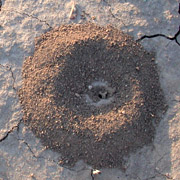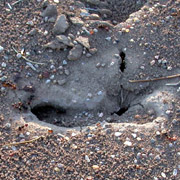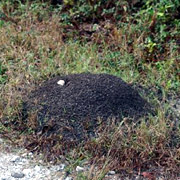Ant Mounds
Ants create nests in many places, but in North America their nests are mostly constructed underground or in fallen logs. Ants are constantly excavating their underground homes and carrying the soil up to the surface. They can create large mounds of soil and sand outside their nest entrances. Some ants build up their mounds with sticks and pine needles and bits of grass. This visible part is called an "ant hill" or an "ant mound." Often a single nest will have more than one opening. If you see an ant mound, look for signs of ant activity nearby.
As these pictures show, ant mounds can take many different forms. (Click on any image for larger version.)






